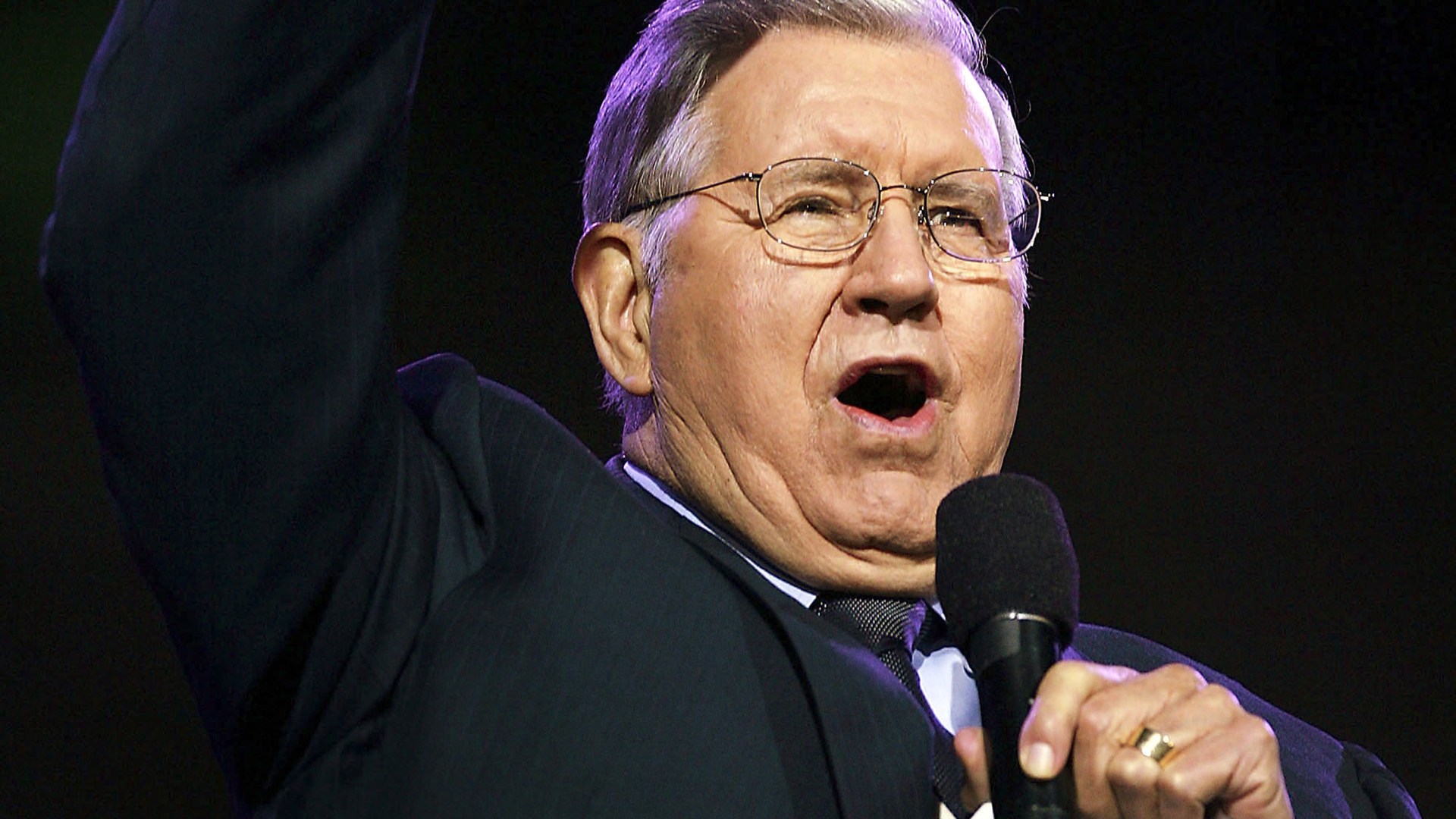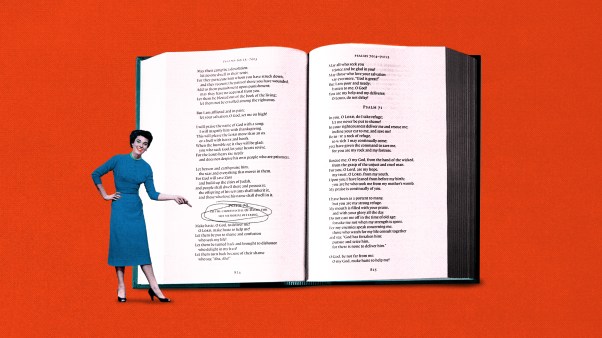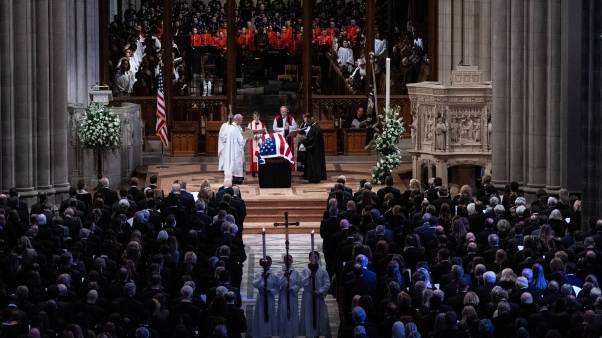"I will sing with the spirit, I will sing with the understanding also." (1 Cor 14:15) The components of any spiritual experience are heart and mind—the heart to will and the mind to grasp; the heart to sense and the mind to comprehend. Both are needed. All heart and no mind means fanaticism. All mind and no heart means pharasaism. These songs will warm your heart, for they comprise tried-and-true favorites of our generation. They will stimulate your thoughts, turning them to Calvary and the Christ of God."
With these words, Dr. Bob Cook, president of Youth for Christ International, offered a foreword to the spiral-bound
Singing Youth for Christ songbook of 1948. Three years earlier, YFC had been organized at a meeting in Winona Lake, Indiana, seeking to reach post-war teenagers and military service personnel with the gospel through a program "geared to the times and anchored to the rock." Stepping beyond narrow cultural boundaries (and hymnals), the innovative songbook offered a resource to youth meetings (and ultimately churches) across the country, presenting 115 selections inviting a healthy expression of both the old and new in Christian music. The story behind this gem is wonderfully told by one of its editors, Cliff Barrows. He is best known as the songleader who has served with Billy Graham worldwide in evangelistic crusades and missions for the past six decades. The account presented here is the fruit of our conversations over the past four years, with his warm reflections of evangelical conviction and creativity. –James D. Smith III
*******************
I grew up in the San Juaquin Valley in California. My sister Mary Jean was a pianist. My aunt Helen Griggs (composer of "Gone, gone … yes my sins are gone") taught me the importance of congregational singing and praise. Eventually, I led songs at the First Baptist church in Ceres. After church, Sunday night "sings" would pack the auditorium for an hour or so.
In the later 1940s, groups in each part of the country had their own musical favorites. The Jack Wyrtzen meetings at Word of Life in upstate New York are a great example. Percy and Ruth Crawford, at Pinebrook in Pennsylvania, put together their little "Pinebrook Praises" songbook. Cyrus Nelson, known especially for his leadership at Mt. Hermon Conference Center, published Youth Sings at about that time in Minneapolis. We all knew each other and there was no competition. We simply saw that generation's need for new mediums and melodies to express their worship and fresh texts in their hands as tools to help it happen.
I was at the Youth for Christ organizational meetings in 1945. As the movement grew, we saw the necessity of a book that would draw together great hymns of the church and new songs from different regions, and furnish that to the hundreds of YFC groups (often in Saturday night meetings) nationwide. Many wonderful people supported us. Each one provided his or her own unique inspiration. I was close friends with Homer Rodeheaver, earlier the songleader with Billy Sunday, who liked this different kind of book, and agreed to publish it. He used to say, "Let the people sing!" In our early crusades, Billy [Graham] and I would invite him to come for a night and lead songs with his trombone. George Sandville, music editor and compiler for the Rodeheaver Hallmark Publishing Co in Winona, Indiana, knew more about editing Christian music than anyone and secured the copyrights.
I compiled the songbook with Dr. Frank Phillips, director of Portland YFC (a veterinarian—later, I believe, associated with Bob Pierce and World Vision) and Dr. Bob Cook of Chicago. It came together in a relatively short time. Actually the list of songbook selections largely took shape as my wife Billie and I were living in our car on the road. We'd lead music at camps like Forest Home and Mount Hermon. Then the kids would go back to their home churches providing stepping-stones for spiritual refreshment in the rest of the church.
The songbook wasn't really designed to combine styles. It just reflected a unique leading of the Spirit of God as we drew from experience songs that ministered to us. The book came together over weeks of reflecting on what was being blessed—what God was evidently using to draw people to himself.
We tried to major on good songs, theologically sound—but with expressions that were bright, fervent and with energy. This was rooted in an understanding and appreciation of the hymnbook (Tabernacle No. 3) that my mother Harriet gave me. She encouraged me to memorize hymns, which I thank God for.
As evangelicals, we believed that good theology combined with good hymnology meant great doxology. We also saw, especially working with Christian youth, that gospel choruses caught the fire and imagination of young people, just as contemporary music reaches many today.
Part of our including new selections involved our knowing the character of the composers. For example, I knew Daniel Iverson, who wrote "Spirit of the Living God," from a church in Florida. With limited space, we didn't include "Turn Your Eyes Upon Jesus" (actually a hymn refrain), but I had met Helen Lemmel and she had a great heart. One of the composers who most inspired me was a man that I never met personally: Charles Alexander. He served as songleader with evangelist R. A. Torrey. Alexander's biography written by his wife Helen, A Romance of Song and Soul-Winning, revealed a Christian character which gave me a vision of what music ministry could be.
We were doing music that combined forms and got people singing after the war. So in our 1948 book "Amazing Grace" appears with "Only Believe." "When I Survey the Wondrous Cross" stands alongside "Thank You Lord for Saving My Soul." "My Jesus, I Love Thee" finds a new expression in "Christ for Me." No one style was inherently more spiritual than another one. It was just a joy to sing to the Lord, with others around us. In the years that followed, some songbooks reflected our pattern, while others focused more on brand new pieces.
Today so many people, if they don't have a worship leader who understands the great Story behind what we sing, and the stories behind individual songs, miss a vital link with our heritage. Christian music at its best offers what I would call a "truth connection" with God's Word and a fellowship with one another. Part of this blessing is the broad fellowship developed. In 1946, Billy and I took "Great is Thy Faithfulness" to England and brought back "And Can it be that I Should Gain." And they sang parts, from texts without notation.
In my work with Billy Graham, our first large gatherings really were YFC in structure, utilizing larger venues to draw people together, partnering with local committees to join hands in prayer and get the word out, and encouraging a real enthusiasm for the Lord in the Word and in song. Billy and I met in the summer of 1945 while my wife and I were on our honeymoon. I'd heard him preach but not met him personally. At a camp near Asheville, NC they needed a substitute songleader, asked me, and we were teamed up. Then we began to minister happily together. I enjoyed preaching, but told Bill I'd be willing to fill this role until the Lord stopped blessing the ministry or until he called one of us home. That trip to England cemented our friendship, which has lasted all these years.
Isn't the Lord wonderful? Let's keep singing His praises!
————– Cliff Barrows is the Music and Program Director for the Billy Graham Evangelistic Team. He was inducted into the Nashville Gospel Music Hall of Fame in April 1988 and into the Religious Broadcasting Hall of Fame in February 1996.
James D. Smith III is associate professor of church history at Bethel Seminary San Diego, lecturer at the University of San Diego, and part of the pastoral staff of College Avenue Baptist Church. He serves on the editorial advisory board of Christian History & Biography. Special thanks are due to Ann Barrows for facilitating recent conversations with Cliff Barrows.
*To learn more about Youth for Christ and Billy Graham's early crusades, order Christian History & Biography issue 92: A New Evangelical Awakening.
*For further study, see Thomas Bergler, "I Found My Thrill: The Youth for Christ Movement and American Congregational Singing, 1940-1970," in Hymns in American Protestant History and Theology (2004), edited by Mark Noll and Richard Mouw. Bergler's 2001 Notre Dame dissertation, "Winning America: Christian Youth Groups and the Middle Class Culture of Crisis, 1930-65," offers worthwhile reading as well.
Copyright © 2006 Christian History & Biography, or the author. Click for reprint information.









